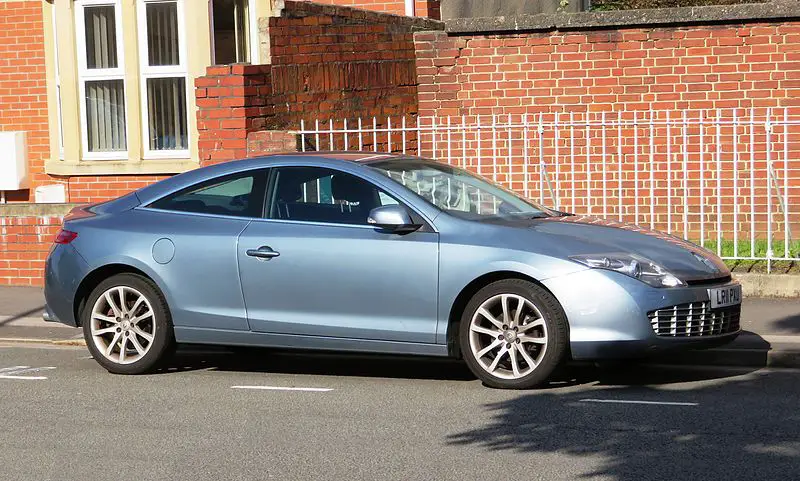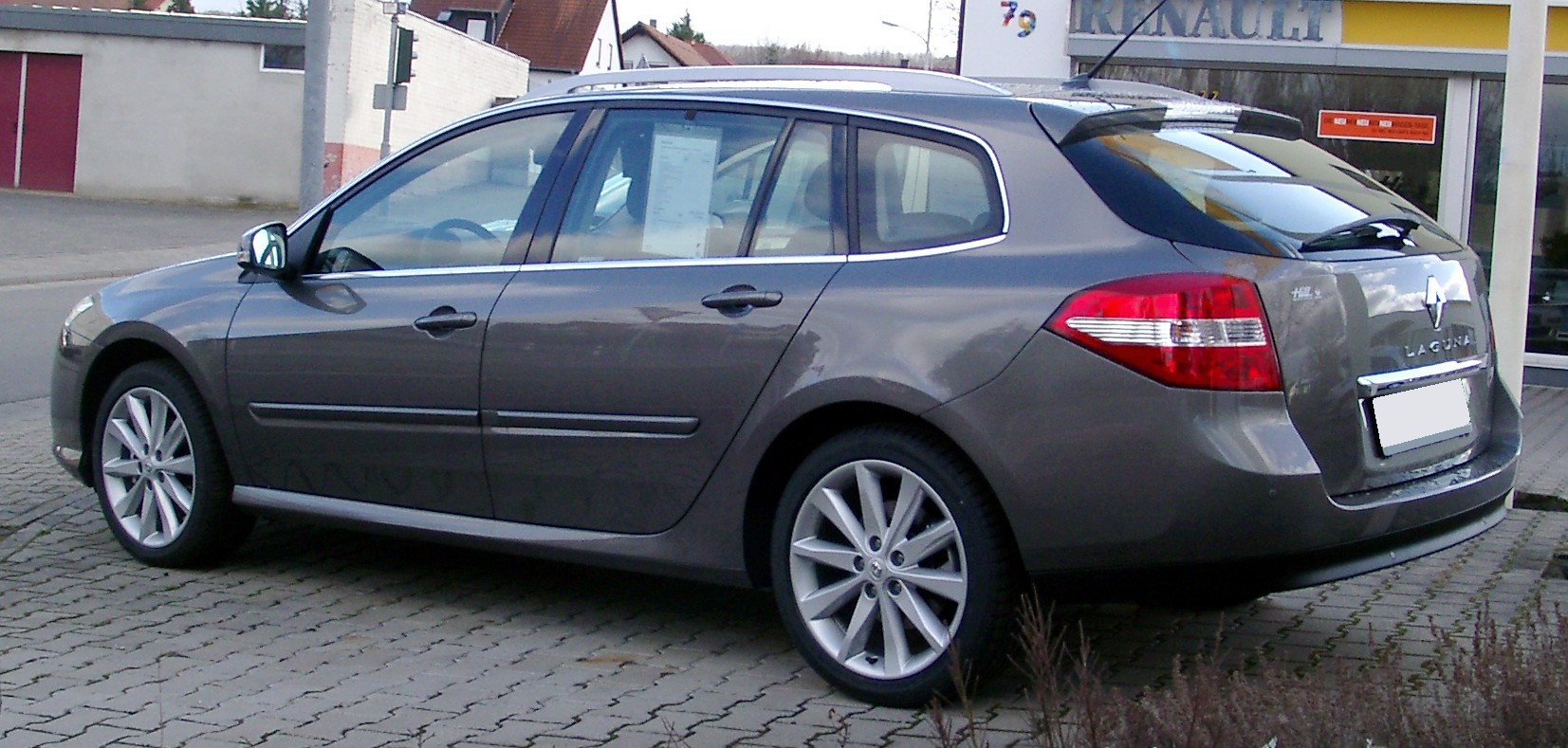Review: Renault Laguna III ( 2007 – 2015 )

Renault Laguna III, or what happens when you shift all your money into reliability, not slot machines. Renault Laguna III, the most reliable car you know nothing about. Yes, absolutely nothing.
After the rather unfortunate episode with the Laguna II, a car that single-handedly established Renault’s reputation in a less than positive way, the French decided to put all their development money into the car’s reliability. In fact, the Renault Laguna III had three big points:
- Safety – Renault Laguna III scored the highest in NCAP tests at the time. Very significant this aspect, because this Renault really is capable of moving about on its own wheels, unlike the previous generation.
- Appearance – The Renault Laguna III coupe is one of the best-looking cars of late, and it doesn’t cost so much that you seriously ask yourself if you really need two kidneys. The other versions look ok too, but the coupe is just something else. It just needs to be shown being washed by Salma Hayek and Christina Hendricks, while in the background Darth Vader plays Metallica on a guitar made out of Playboy magazines.
- Reliability – As with the Renault Clio IV, reliability is one of the main reasons to buy a Laguna III. Problems are few and easily fixed, so there’s no reason for your pulse to rise when you start the engine and your blood pressure to rise as you drive until everything goes black, your hands shake.

So why isn’t Europe full of Renault Laguna III?
Well, first of all, it’s Renault and it’s not german. Especially since the Laguna III had to fight with the Passat B7, Mondeo IV but also the Insignia A, and this was only in the saloon segment, a segment that was already dying. Coming after a more questionable reputation than people selling friendship bracelets to tourists and arriving in a crowded world, the Renault Laguna III remained just a car for connoisseurs. If the automotive world would stay in an apartment, the classic saloon would stay in the parental home in the countryside. But are we still interested in 2022 in classic saloons?
That is of course unless you go for the Coupe variant, which seems to me the only version worth buying. It’s a killer-looking car, reliable and decent even among young people. Yes, it’s not a sports car like a 3 Series Coupe but beats more in the area of the Mercedes CLK, a comfortable cruiser. A truly special car for connoisseurs and enthusiasts.

Renault Laguna III Engines
Petrol
- 1.6 MPI of 115 horsepower – Renault Clio? Fantastic engine. Renault Megane? Decent engine. Renault Laguna III? Falls shorter than my expectations of this website.
- 2.0 MPI of 140-horsepower – An internal combustion antique at the end of its career. Some engines develop an appetite for oil sometime late in life, but like most naturally aspirated petrols (sans Nissan) you have nothing to worry about. But does a petrol tie in with Renault Laguna III’s cruiser character?
- 2.0 Turbo with 170 and 205 horsepower – I wouldn’t recommend this engine in the Laguna sedan or station wagon, but in the Laguna III Coupe, this is by far the most balanced engine. Again, a trouble-free engine but not cheap on maintenance, fuel, or tires.
- 3.5 V6 of 238 horsepower – Reserved exclusively for the Coupe version, I have serious doubts that you will buy one of these.
Diesel
- 1.5 dCi of 110 hp – As with the 1.6 petrol, this engine is ok on the Clio and decent on the Megane, but on the Laguna III it’s like one of those car vacuum cleaners: it makes noise, but nothing happens. Be careful with the particle filter and the timing belt that has to be replaced every 4 years or 60.000 km.
- 2.0 dCi of 130, 150, 175, and 180 horsepower – Probably most people will go for the classic 2-litre 4-cylinder diesel. What is it with us Europeans and 2 liter 4 cylinder diesels? Anyway, the 180 horsepower version is reserved for the Laguna GT, and the 175 horsepower version is shared with the Nissan X-Trail and Renault Koleos. Unlike the 1.5 dCi, it has a timing chain so you don’t have to stress too much about it. You’ll have stress instead with the particle filter that clogs every 200 meters of urban driving.
- 3.0 V6 dCi of 235 horsepower – The most powerful diesel on the Renault Laguna III, but is it really worth such a big engine in a car that’s in the mid-range? Why spend money on taxes, fees, and DPFs when you can use that money to buy a Coupe?

Renault Laguna III General Issues
- Some manual gearboxes, code names PK5 and PK6 have been over-tightened from the factory and need bearings changed. If you change the bearings, the boxes will run forever. If you don’t, you’ll end up like several owners who have run out of gearboxes after only 10,000 km. The problem is more known in Opel Vivaro and Renault Traffic, but also in Renault Laguna III, these gearboxes have been fitted on 2.0 MPI petrol and 2.0 dCi diesel.
- The Keyless Go card has to be put in the special slot otherwise it runs out of battery. I don’t understand the obsession with cards? We’re out of communism and we don’t want cards anymore. Oh yes, the card slot has to be constantly cleaned of dust, otherwise, it doesn’t make contact properly.
- In pure Renault tradition, launched ever since the Megane II is the appetite for headlights. Not that other brands are any better, but there you have to carry cans of oil, here just headlights.

Renault Laguna III Verdict
Have I mentioned before that I’m a Renault Laguna III coupe fan? And the station wagon and saloon versions are ok and it shows that you have different tastes from the rest of society. And you also have a reliable car, even more, reliable than the rest of society. But that coupe…
What engine do you recommend? For the coupe, absolutely the 170-horsepower 2.0 turbo petrol engine. Though probably the kind of guy who’s interested in a Laguna is long past the age-appropriate for a coupe and probably interested in the station wagon version. So that leaves the 150-horsepower 2.0 dCI engine, an absolutely decent diesel that gets you from Klaipeda to Cabo da Roca without any fuss.
Similar Articles

Review : Toyota Verso AR20 ( 2009 – 2013 )

Review : Skoda CitiGO ( 2011 - 2020 )

Review : Seat Mii ( 2011 - 2020 )
Write an answer
-
-
Chris
Only at iddle does the dashboard vibrate on my car. Unfortunately, the plastics and dashboard on the Laguna 3 are of inferior quality – ‘Renault crickets’. There is also a video with some rubber that you can put on so that it stops vibrating. If the car pulls well and disappears while driving, you have nothing to do but look for rubber of that kind if it bothers you. My consumption is somewhere around 9.5 average because it does not have an eco button, the car has an E5 and 131 kw estate version – 1600 kg empty. For a family with long trips it is super ok, for commuting to work I do not think it is ok. It is 4800 mm long, it is difficult to park and consumes a lot.
-
-
Myl
I own a Renault Laguna 3, I read many comments but it is not true what some people think, it is a reliable and elegant car. And it is particularly pleasant to drive such a car, it really has a higher consumption but if you go on a long trip it does not have such a high consumption. I have done more than 200 km and nothing needs to be changed as some specify. I was in Paris it is full of Renault Laguna 3, why do some people comment what is not true, it also depends on how you drive it, that's how you keep a car.
-
Raz
Your website is very good, with complex information and formulated in a note that puts you in a good mood. After reading what you wrote about the Laguna Coupe, I ended up finding a 180 hp diesel model, 4 control, year of manufacture 2011, but with 296,000 real km, so I expect it to "go or not :)". The car has been serviced so far only with oil and filters. My doubts would be: 1. The timing belt being on a chain, if it doesn't make any noise, can it still be used or is it mandatory/preventative to change it? The clutch is the original one, it doesn't show any signs of wear. Can I expect it to fail at the number of km it has or can it still withstand it? And what test can I do at an authorized service to check the technical condition of the timing belt and clutch? The turbocharger and the injectors "how long can they go :)". Or the conclusion is "lucky as the lottery" at these km. Thanks!
- Review : Toyota Verso AR20 ( 2009 – 2013 ) 10 November 2025
- Review : Skoda CitiGO ( 2011 - 2020 ) 02 August 2025
- Review : Seat Mii ( 2011 - 2020 ) 02 August 2025
- December 2025
- November 2025
- October 2025
- August 2025
- July 2025
- April 2025
- March 2025
- February 2025
- January 2025
- December 2024
- November 2024
- October 2024
- August 2024
- July 2024
- June 2024
- May 2024
- April 2024
- March 2024
- February 2024
- January 2024
- December 2023
- November 2023
- October 2023
- September 2023
- August 2023
- July 2023
- June 2023
- May 2023
- April 2023
- March 2023
- February 2023
- January 2023
- December 2022
- November 2022
- October 2022
- September 2022
- August 2022
- July 2022
- June 2022
- May 2022
- March 2022
- April 2021
- January 2021
- December 2020
- November 2020
- October 2020
- September 2020
- August 2020
- July 2020
- March 2020
Hello, Congratulations, keep it up. You are a Moderator with a sense of humor and technical skills at the same time, keep it up.